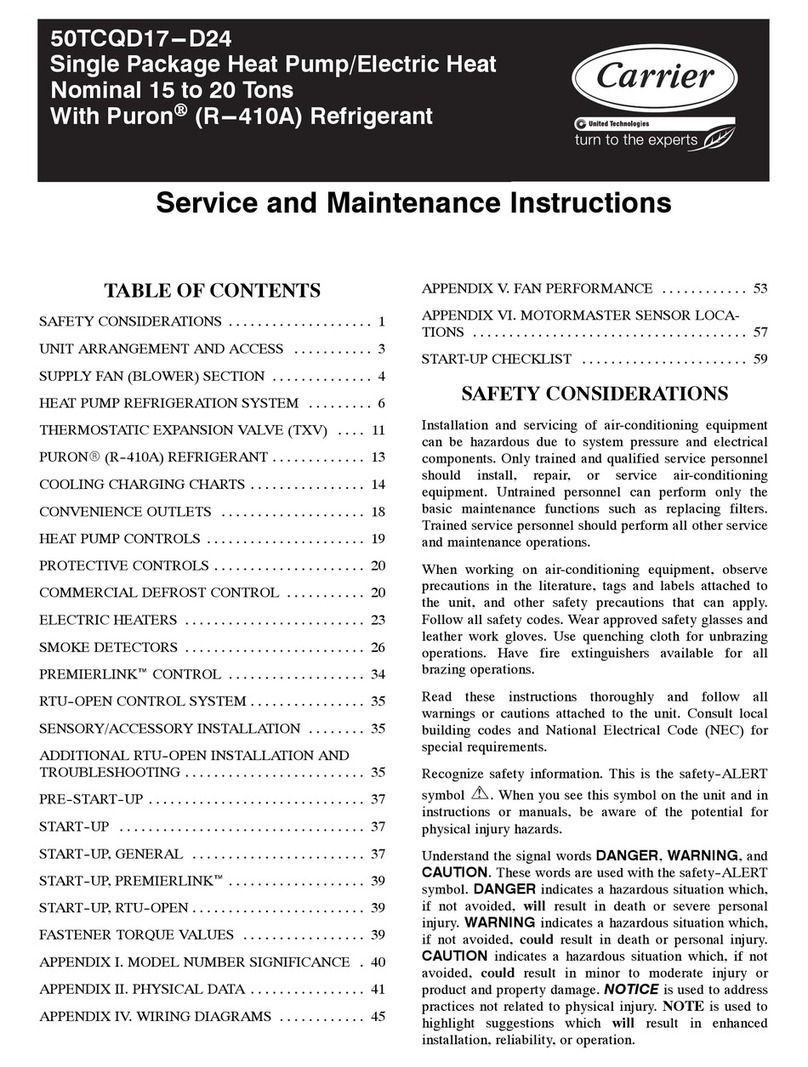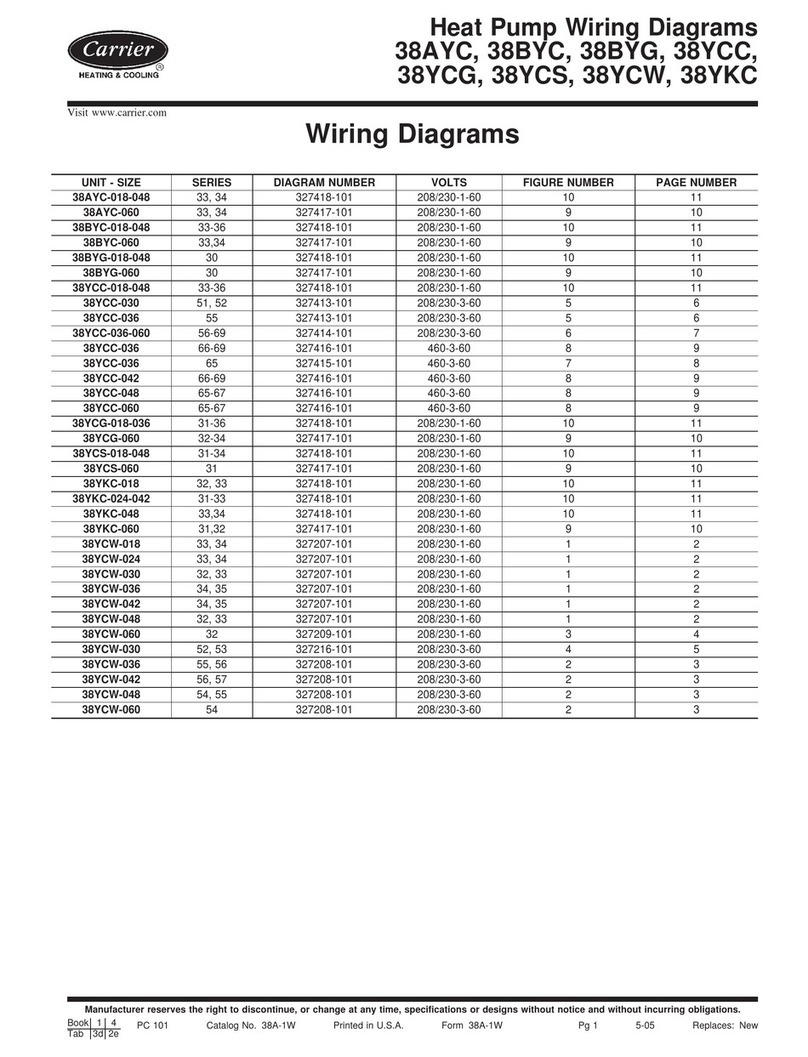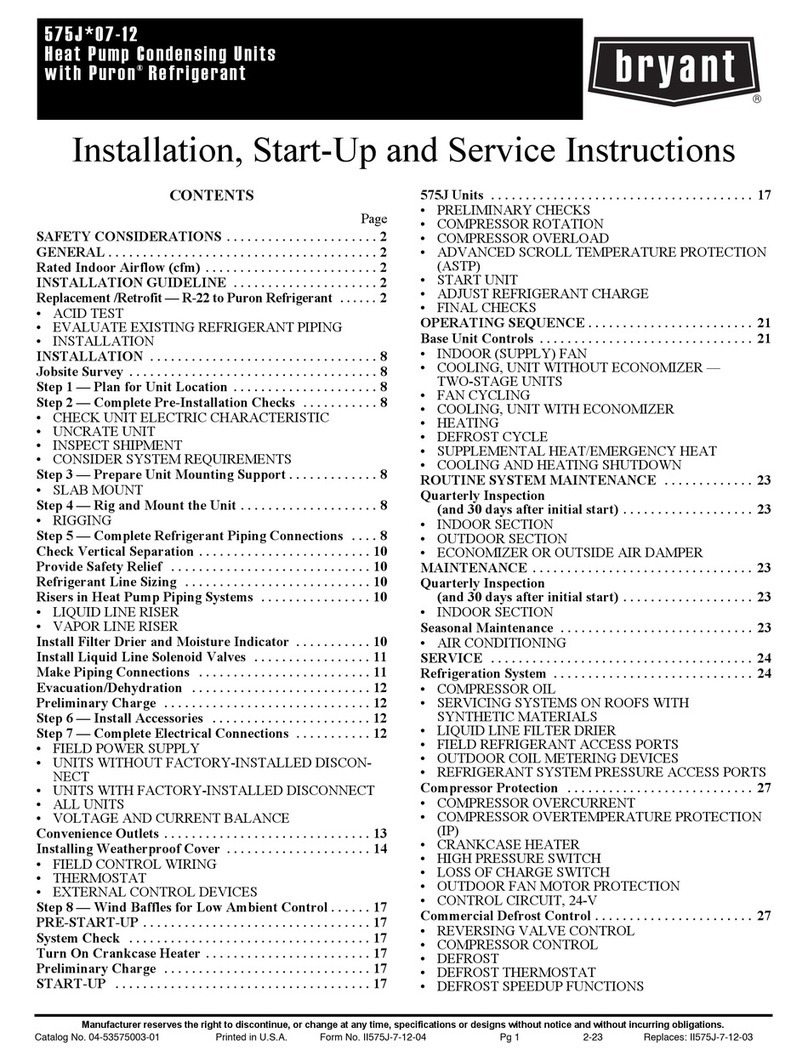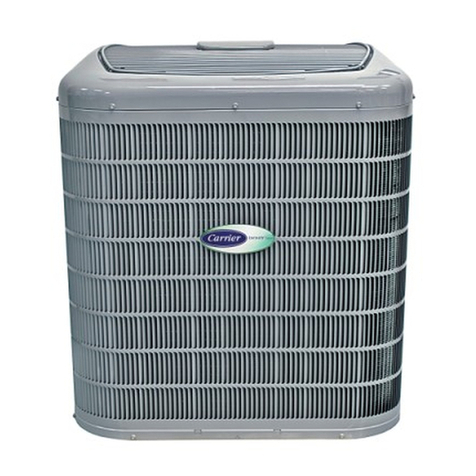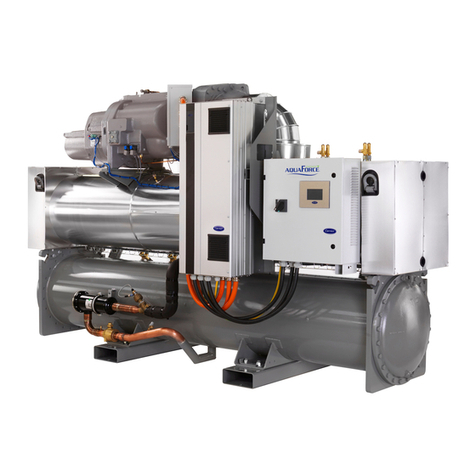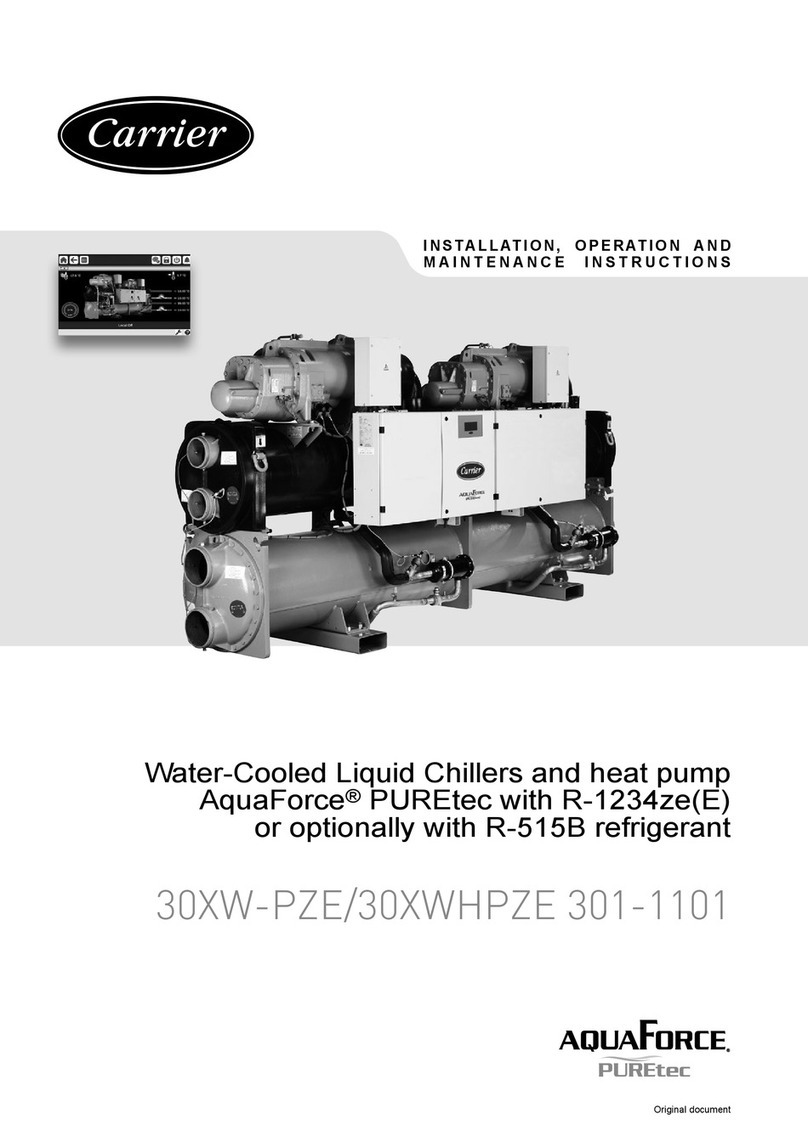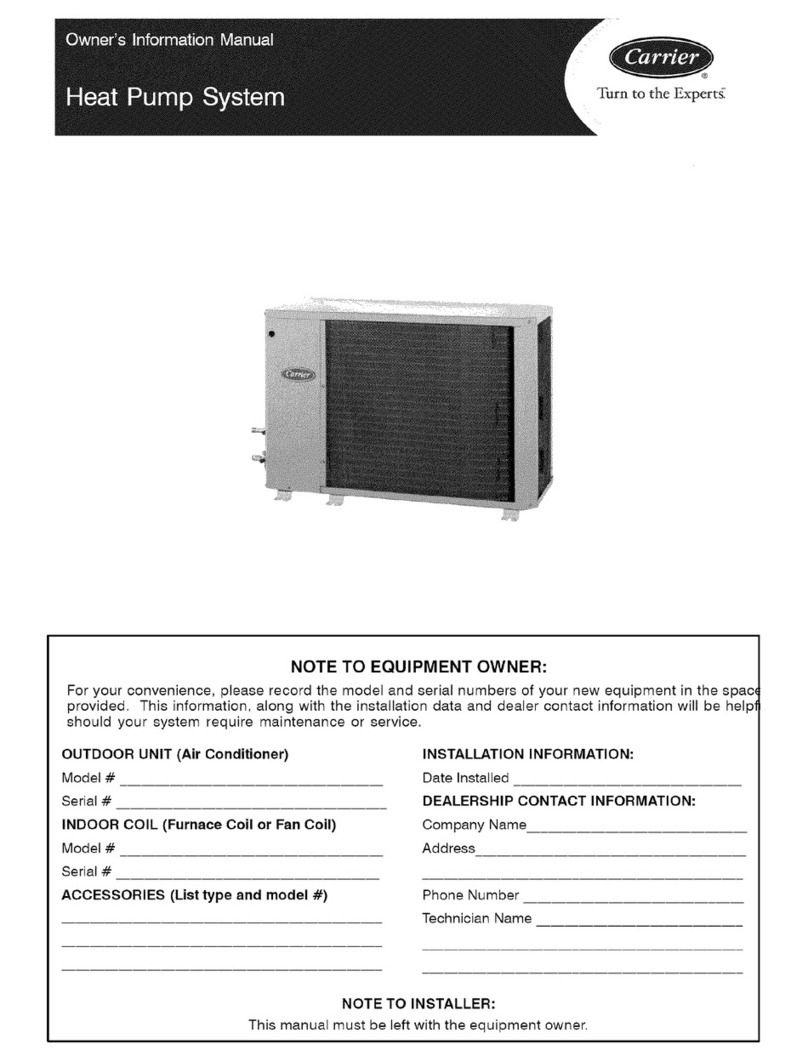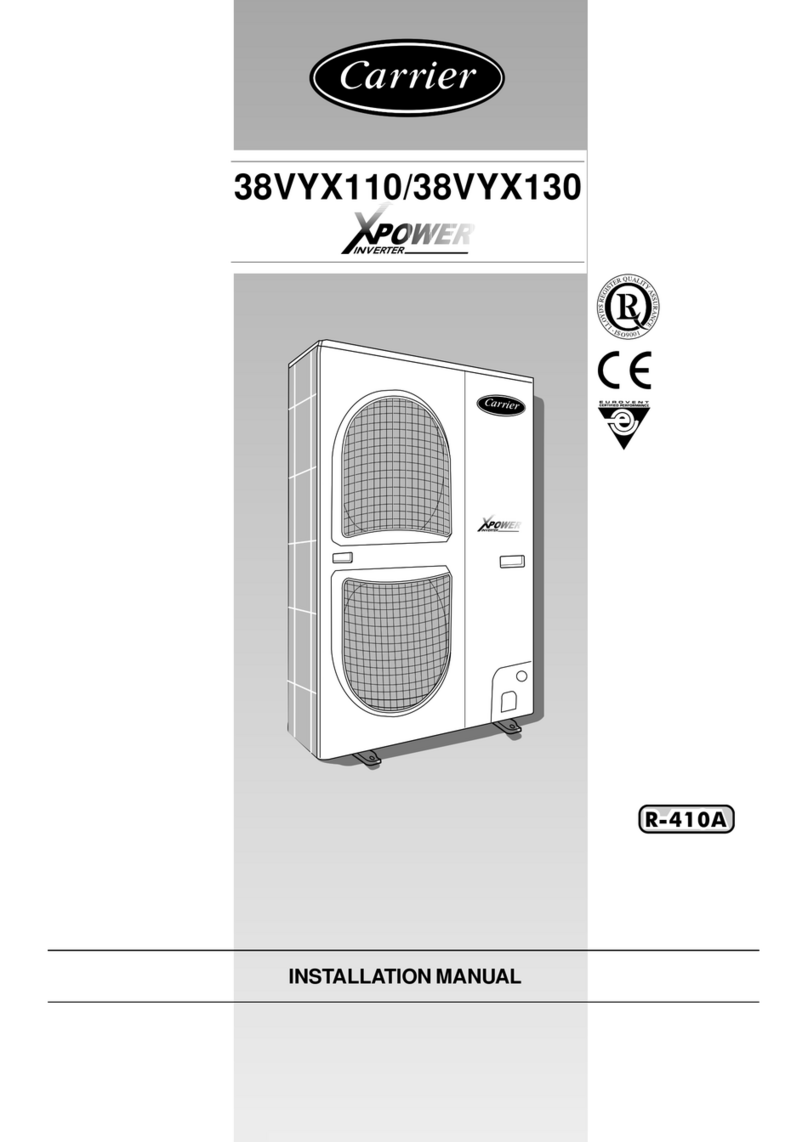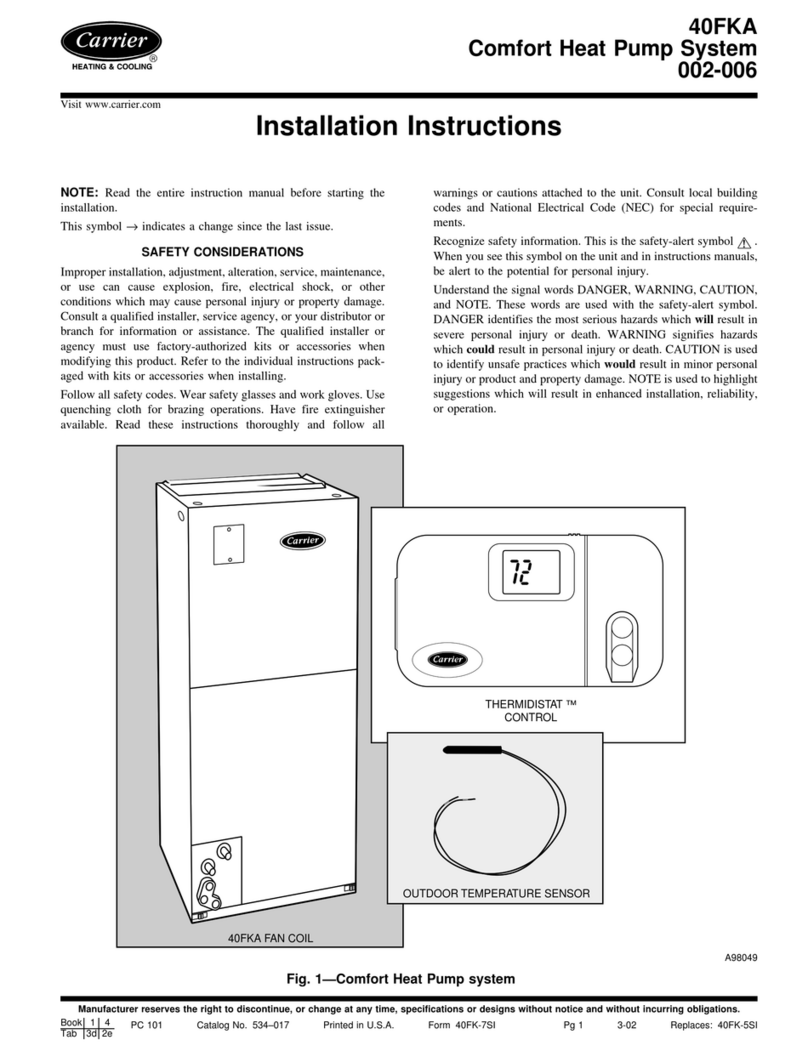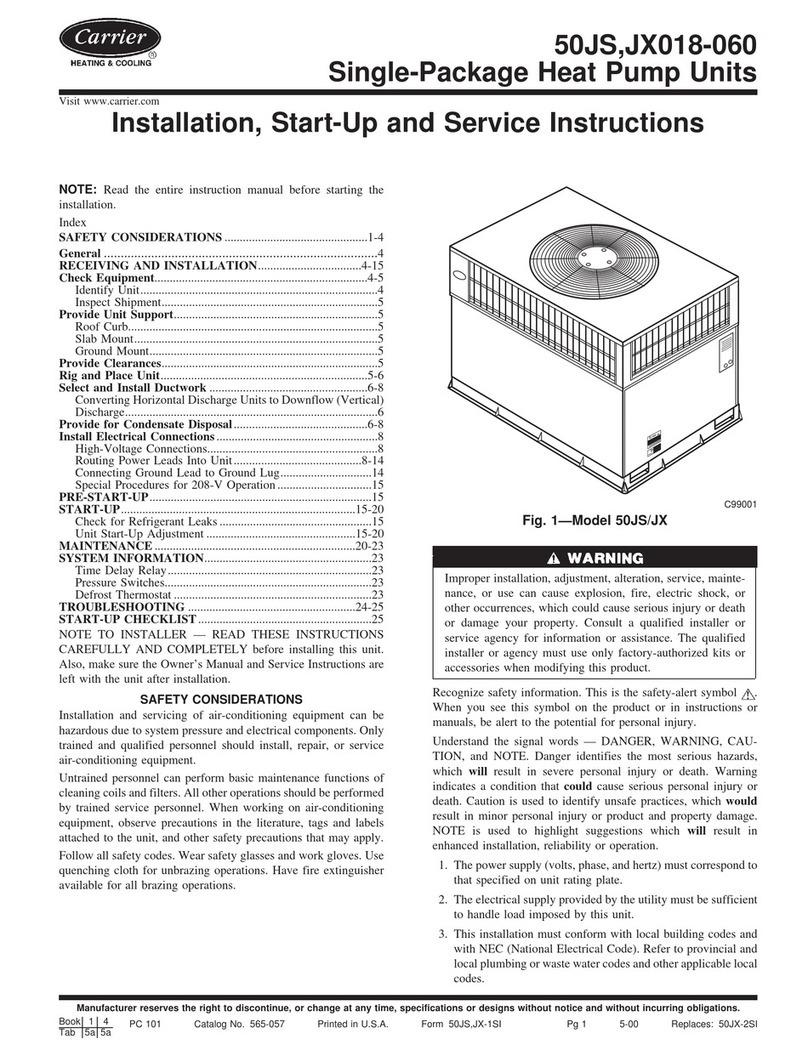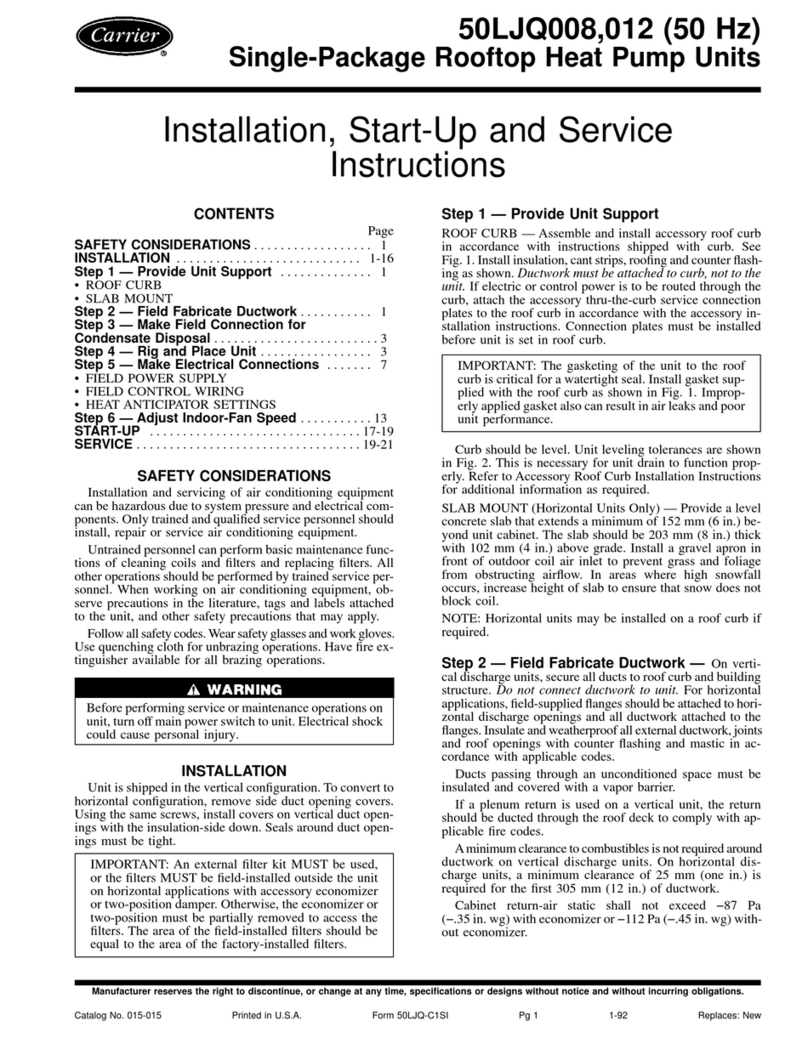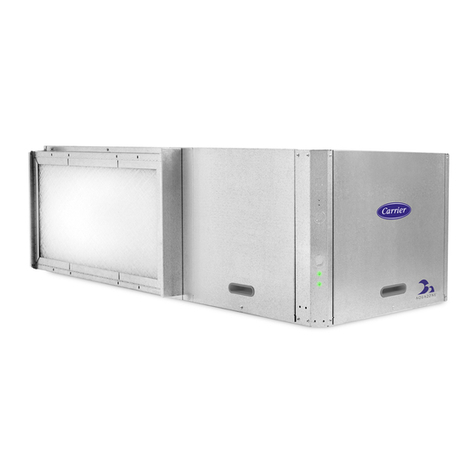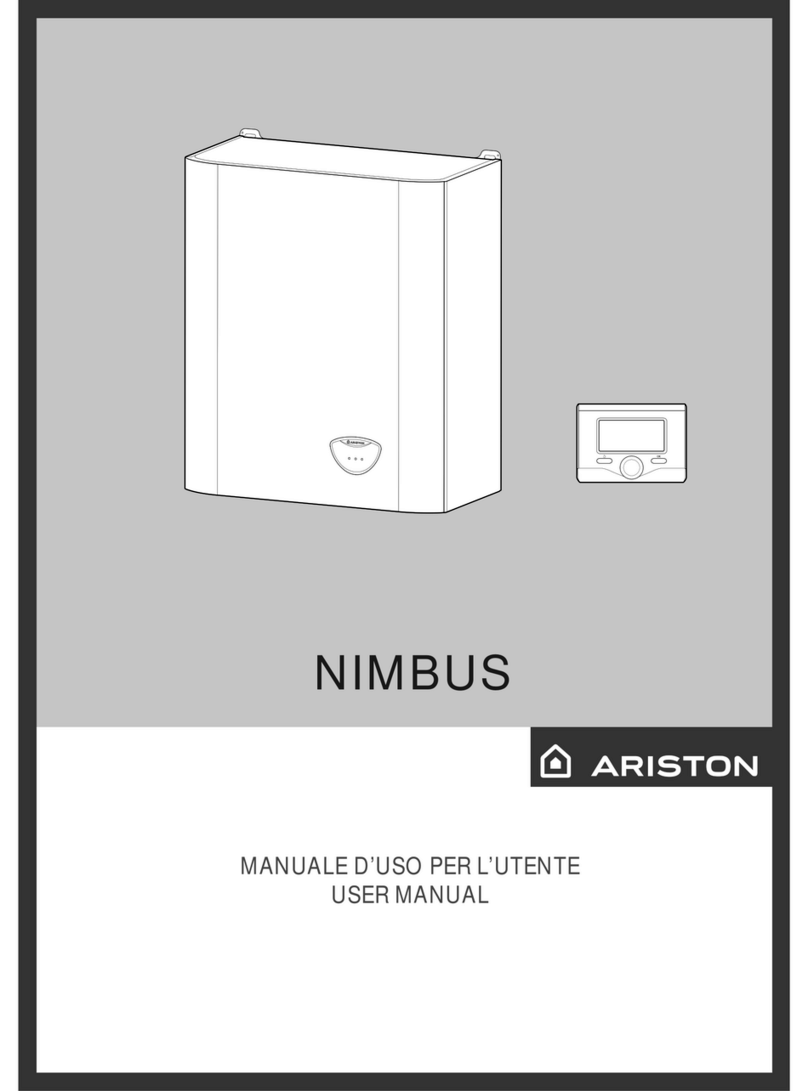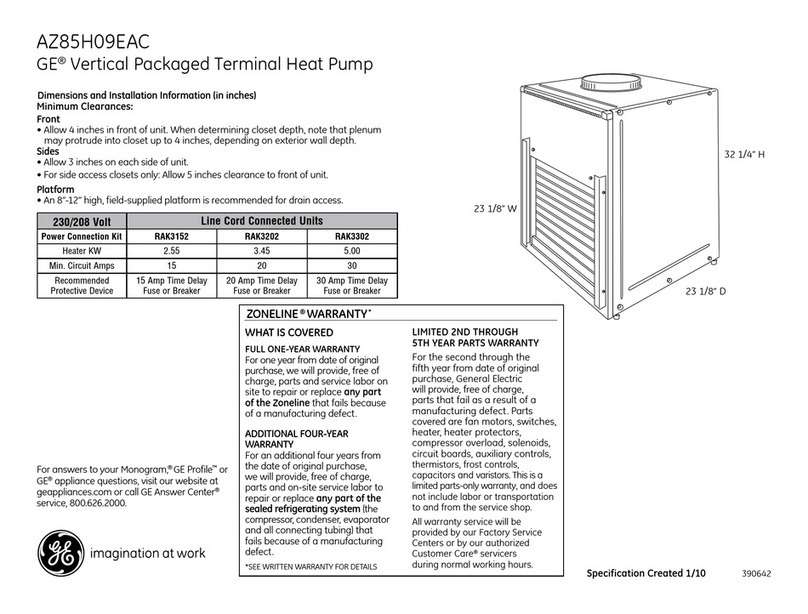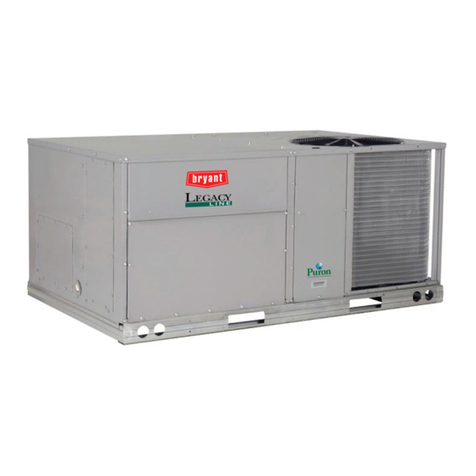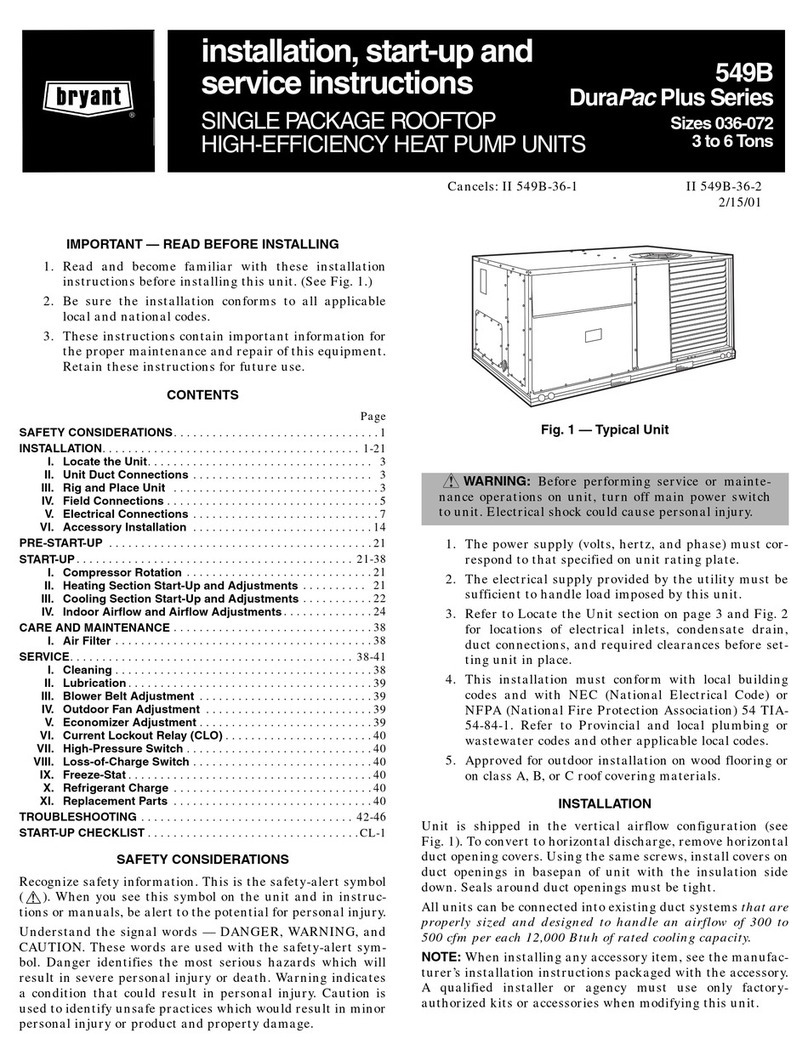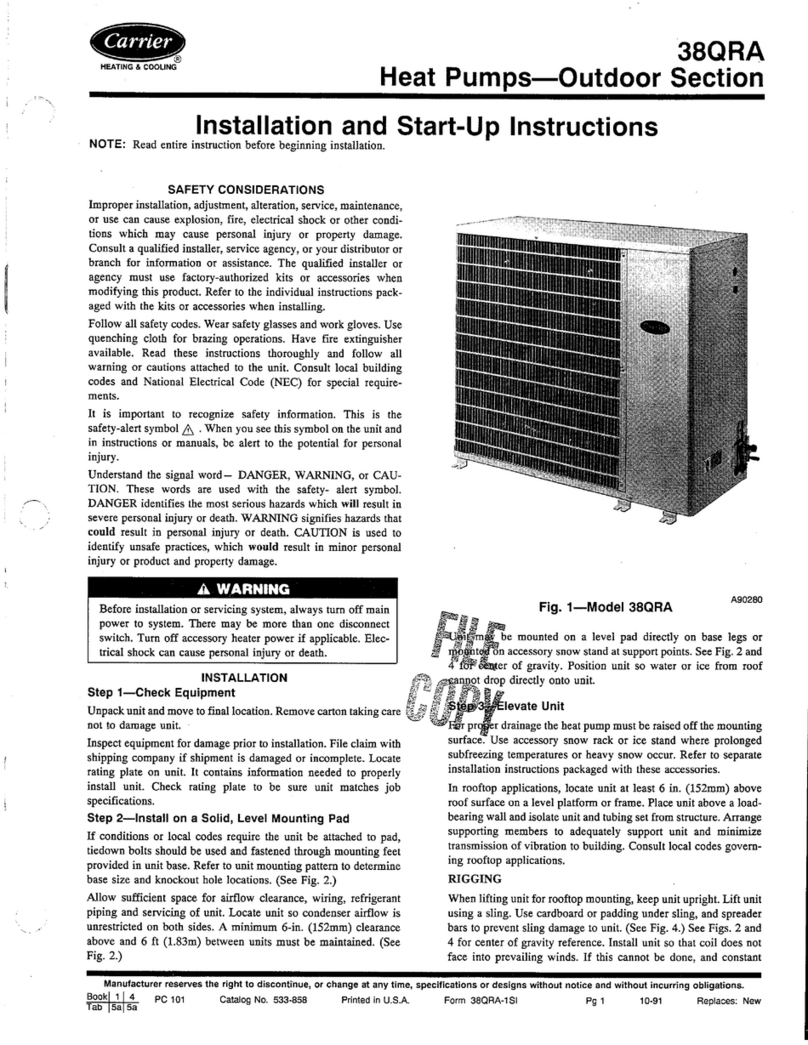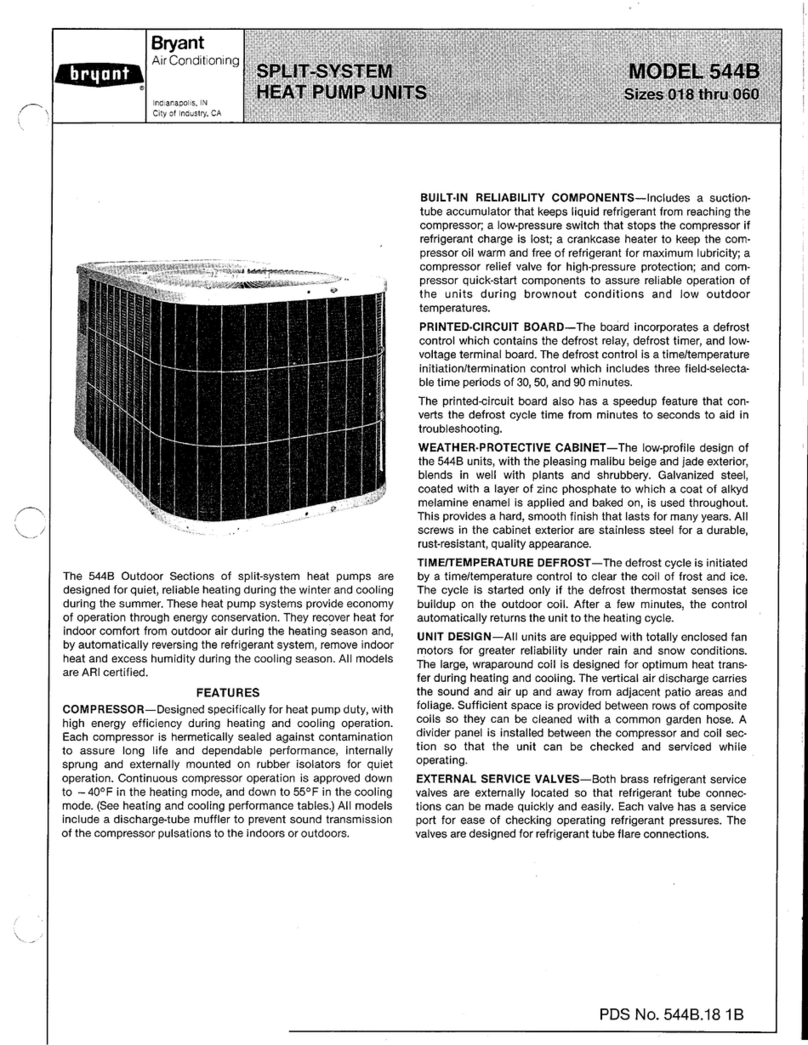
9
4 - INSTALLATION
In addition to the mass ow to be dumped by the operator in an
emergency, the pressure relief device must additionally be able
to dump a mass ow corresponding to the required minimum
refrigerant blow-down capacity Qmd (see safety valve calculation
in section 10).
The heat pump must be operated only within the permissible
limits of use (see appendix). The system installer/operator must
ensure that the limits of use are maintained.
When selecting and sizing lines, observe the applicable general
and national standards, conditions and guidelines. The latest
applicable engineering standards must be taken into account and
observed.
We recommend hydraulic separation of the heat pump and heat
distribution network/heat consumers. This separation can be
achieved with a separate heating circuit connected to a low loss
header or buer tank. On the heating side (condenser), ensure a
suciently large buer volume – at least 15 litres per kW of heating
output. A smaller buer tank can only be used in exceptional cases
and at the user’s own risk if the energy consumption and ow rate
through the heat pump heat exchanger are permanently constant.
The operating point (temperatures, ow rates) agreed in the
system datasheet must be ensured.
In any case, at least the minimum and maximum ow rate through
the condenser as specied in the machine data (see appendix)
must be maintained during heat pump operation. The ow rate
must lie within the specied minimum and maximum values.
The parameters specied in the system datasheets (in particular
temperatures, temperature spreads, ow rate) must be met during
heat pump operation. Modied system parameters can result in
dierent heat pump outputs and/or temperatures.
If CARRIER is not notied of a specic operating point/specic
temperature spread in good time, the heat pump will normally be
sized with temperature dierentials of 5 K between condenser
inlet and outlet. In this case these values will have to be complied
with during heat pump operation.
As standard, the heat exchanger connections are Flange unions.
Ensure that these connections are not reversed. For the position
of these connections (inlets and outlets), see the dimensions sheet
in the appendix. The connections must be tension-free and be
made with anti-vibration ttings.
When installing pipework, take care to avoid transmission of
structure-borne sound.
When sizing the heating circuit pump/buer charging pump, the
internal pressure dierential of the heat pump condenser must
be taken into account (in accordance with the operating point
data).
Heating water must be treated according to VDI 2035, Ö-NORM
5195 or EN 14336. The limit values specied in Table 1 must
always be observed.
Ensure that no dirt or foreign bodies can enter the condenser. We
strongly recommend that you install a lter, dirt separator, or at
least a lter strainer, upstream of the condenser inlet.
Ensure that the lter is easily accessible and regularly cleaned. A
clogged strainer signicantly impairs heat transfer and can cause
a high pressure safety shutdown. Install valves and thermometers
in the ow and return lines to allow continuous monitoring of the
water ow rate and the heat pump operating state. At the lowest
point in the pipework, t a drain pipe to allow the system to be
drained. Size the heating pipework according to the heat pump
specication.
The ow velocity in the pipework should not exceed 1.0 m/s (noise/
pressure drop).
Regarding the temperature spread, please note the need for buer
tank cooling: assuming that the heating water buer tank has been
fully charged to the required temperature, the heat pump must
then be stopped (via remote ON/OFF) until the buer tank has
cooled down again suciently or the system can operate at the
design temperature spread again. If, for example, the set
temperature is 85 °C and the temperature spread between
condenser inlet and condenser outlet is 10 K, the heat pump should
run only when the temperature at the condenser inlet is 75 °C or
less (see also section 6.2).
Before commissioning the heat pump, ensure that the condenser
circuit contains no air or other gases and the consumer system
has reached operating pressure.
CAUTION! The water quality must be regularly checked.
Incrustations or acidic deposits could impair the condition
and function of the heat exchanger.
CAUTION! Impermissible media and substances they may
contain can destroy the components in the hydraulic circuit.
Abrasive solids (e.g. sand) increase wear.
Excessively hard water can result in deposits on the pipe inner
walls, which could impair the heat exchanger performance.
The heat exchanger must not be exposed to dynamic or local
loads. Dynamic excess pressure and water hammer can damage
the heat exchanger.
Exceeding the highest permissible ow rate can cause erosion
and damage the condenser.
After draining the condenser water circuit, always thoroughly dry
the condenser tubes to prevent corrosion.
Pump cavitation and gas in the hydraulic circuit must be prevented.
During prolonged idle times, completely charge the heat exchanger
or fully drain and dry it.
WARNING! Never open the heat exchanger under pressure.
Risk of scalding.
4.6 - Source energy connection (WQA)
Sizing and routing the source system is the system installer’s
responsibility and must be carried out in compliance with CARRIER
guidelines.
The system installer must size and install all components required
for the hydraulic circuit (e.g. safety valve, diaphragm expansion
vessel, air vent valve, etc.).
WARNING! The upper pressure limit and maximum
temperatures of the heat pump evaporator specied in the
machine data (see appendix) must not be exceeded at any
time. This applies regardless of whether or not the heat pump
is running and whether the heat transfer medium in the
evaporator is owing or at rest.
